

Metals are materials known for their wide variety of applications. But have you ever wondered how these are made? The processes of metal fabrication are what make them achieve superior quality.
From dairy, food and beverage manufacturing, consumer goods manufacturing, petroleum, to construction — numerous industries that rely on metals daily. Doubling down on the many ideal properties of metals, they are immensely durable and malleable. This is why the demand is relatively high for sheet metal fabrication in the Philippines. Continue reading to learn more about the different processes.
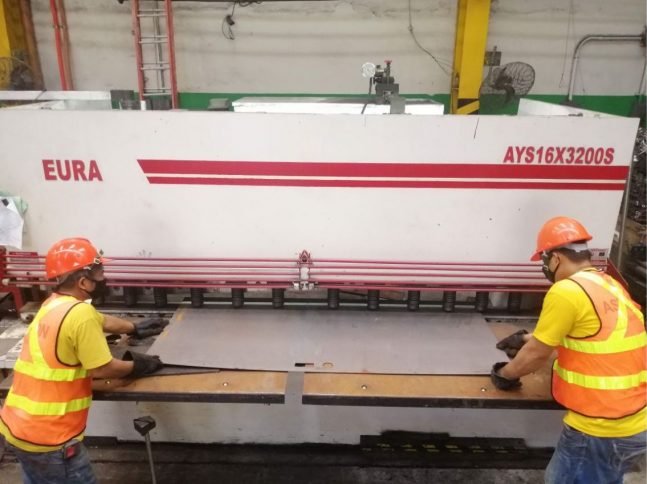
Shearing refers to the process of slicing through sheet metal with a blade-affixed machine or tool. The upper blade and lower blade are forced past each other with a slight space between them called clearance. The lower blade will typically remain stationary while the slicing process is ongoing.
This process does not require the use of heat and it can perform straight line cuts. When finished, it does not produce waste in the form of chips, making the finished products extremely precise and therefore, an ideal metal fabrication choice for most people.
At Astron Metal Works, we have cutting-edge equipment for shearing. We take pride in our hydraulic shearing machine that can cut through various thicknesses and lengths. Because of this, we can provide labor works for various sheet metal shearing of up to 16mm (5/8″) Mild Steel and 8mm (5/16″) stainless steel.
After cutting the metal sheets, metal fabrication companies will bend them. In the past, traditional hammers were used to manually bend sheet metals. But today, the most commonly used machines are called press brakes.
One can argue that bending is one of the most intricate processes in metal fabrication as this is what produces customized metal works. It works by clamping the metal between a matching punch and die, forming the metal into a customized shape.
When it comes to bending, one of the biggest challenges is managing to spring back. Springback occurs when the metal returns to its original shape after being bent. The solution for this is overbending, but perfecting the required bending angle is challenging. It’s also possible for the metal to harden while they are bent, which can lead to cracking.
All these are reasons why the bending process can only be done by those who are equipped with expertise.
Since handling this process requires extra caution, we at Astron Metal Works make clean and precise bends. Aside from using modern bending and pressing automated brake machines, our team of experts is meticulous with the procedure as well.
We ensure that each metalwork is bent with accuracy in mind. We offer bending services for various sheet metals that can produce 12mm (1/2″) Mild Steel or 6mm (1/4″) stainless steel with a maximum length of 3000mm ( 3m ).
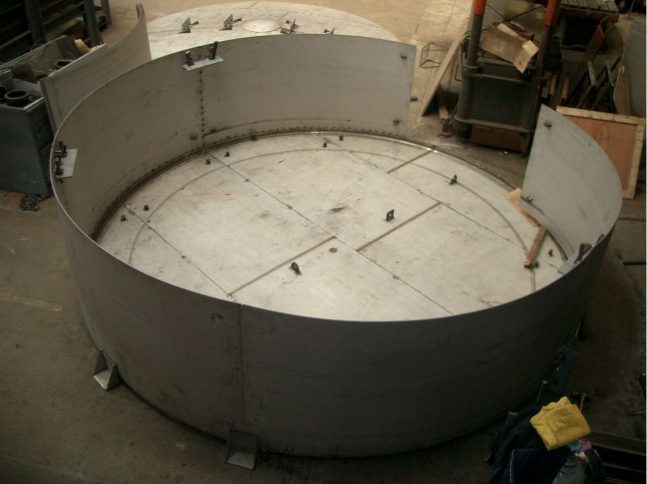
Sheet metal rolling is another form of bending. It works by passing sheet metal through a series of rollers. Each of the rollers adds shape to the metal. Since the process is repetitive and consistent, the finished metal products have precise results. At Astron Metal Works, we can roll steel plates up to 12mm (1/2″) thick x 3.6m (12ft) length.
Once the sheet metal has been cut to size in a circular shape, a machine will hit the metalwork over the surface to create a concave indentation. This process is known as dishing.
Our dishing technique at Astron Metal Works allows a relatively efficient method to produce the fastest output while still maintaining superior quality. We can produce dish heads flanging at edges up to 4.5m in diameter.
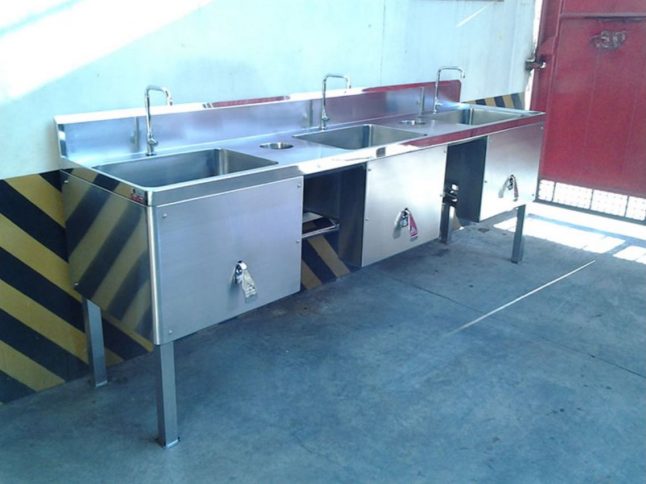
Punching is where uniquely shaped hydraulic turrets hit the sheet metal to create a hole. The punch often passes through the work through a die.
This process falls into two subcategories based on the application. In most cases, punching is done for fastening latches or other parts. In other applications, the area with the hole is specifically extracted from large sheet metal to shape other usable metalwork. This is known as blanking.
Astron Metal Works does the best punching work. We offer mechanical and CNC punching works through extrusion punches, drawn punches, and slotted holes. Rest assured that we can cater for medium to heavy gauge punching work with our state-of-the-art hydraulic punch press.
As its name suggests, this process involves assembling the sheet metal into a desired finished product. Assembling is typically performed through welding where the metal parts are joined directly.
At Astron Metal Works, we can fabricate and assemble all your required metal needs. All you need to do is provide us with your specifications and dimensions!
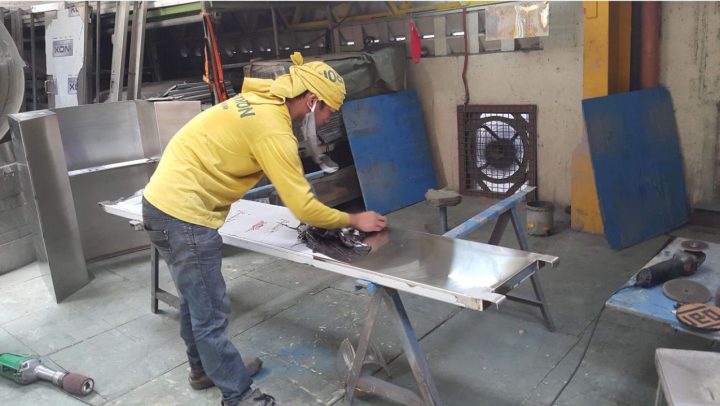
The final process of metal fabrication is finishing. Here, the assembled metal products go through buffing and painting.
Buffing is for stainless items and has two types of finishes which are: mirror or hairline. Throughout this procedure, the metal surfaces are buffed to achieve a smoother and brighter finish. On the other hand, painting is applicable for products made with mild steel.
We’re all aware of the numerous applications of metal. It’s all made possible by the processes of metal fabrication. Metal has a lot of advantages to offer such as extreme durability and malleability.
Here at Astron Metal Works, our services and products undergo meticulous quality checks to ensure we provide clients with only the best. Click here to learn more about our metal fabrication services today!
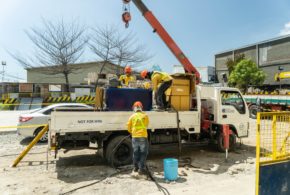
What are the benefits of quality control in metal fabrication? Enhances safety Cost savings Compliance with industry standards Boosts customer loyalty When sourcing for an industrial fabricator in the Philippines, it’s crucial to choose one that has an in-house quality control procedure. In the metal fabrication and manufacturing industry alike, quality control is defined as […]
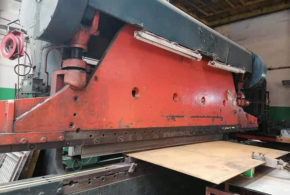
What are the techniques used in sheet metal fabrication? Shearing Cutting Bending Punching Assembling Sheet metal fabrication is defined as the manufacturing process of shaping sheet metal according to functional needs. Sheet metal is one of the most ideal materials for a wide array of industries because it is lightweight and immensely ductile. The techniques […]
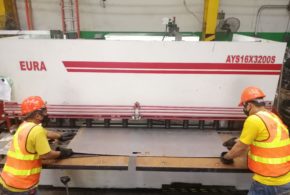
What are the uses of CNC cutting services in the Philippines? Construction materials Food production items Metal furniture Gas station fixtures CNC cutting refers to the metal fabrication procedure that involves using computer numerical control routers with the advantage of versatility and flexibility being derived from automation. The computerized routers are adept in cutting […]

What are the uses of sheet metal fabrication? Construction Petroleum Industrial Industries Sheet metal refers to metal formed into thin sheets, typically by hammering or rolling. It is highly durable and able to maintain its structural integrity, making it easy to work as it can be bent, stamped, cut, dished, and punched. Sheet metal fabrication […]